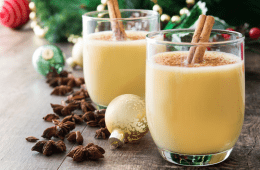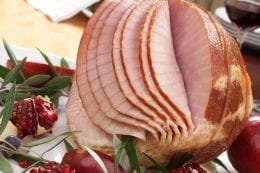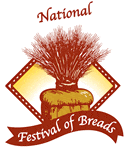
Eggnog is a holiday party classic that dates back to the 13th century. This creamy, thick, spiced egg drink is a favorite for many worldwide.
Because eggnog uses eggs, there are ways to make it safely to prevent giving the gift of foodborne illness. And don’t let the added alcohol fool you! The alcohol will not kill bacteria.
Instead of using raw eggs, use pasteurized eggs. They have been commercially pasteurized with a low temperature heat treatment that destroys Salmonella without changing the physical and nutritional properties of the eggs. They are slightly higher in cost to standard eggs, but are worth the price to prevent foodborne illness. Egg substitutes are also an option.
Another, and even safer, method is to make a cooked egg base.
- Combine eggs and half the milk. Sugar may be added also.
- Cook the mixture to 160°F, stirring constantly. Use a double boiler to prevent scorching.
- After cooking, pour into a bowl and place in the refrigerator to chill.
- Add remaining ingredients and enjoy!
If buying prepared eggnog, read the label to be sure it is pasteurized.
Sources: https://bit.ly/3yoWJzX and https://eggsafety.org/national-eggnog-month-make-safely/




 When it’s cold outside, what a better way to warm up your home with some freshly made bread! Get creative and submit your original recipe to the National Festival of Breads in 2025.
When it’s cold outside, what a better way to warm up your home with some freshly made bread! Get creative and submit your original recipe to the National Festival of Breads in 2025.